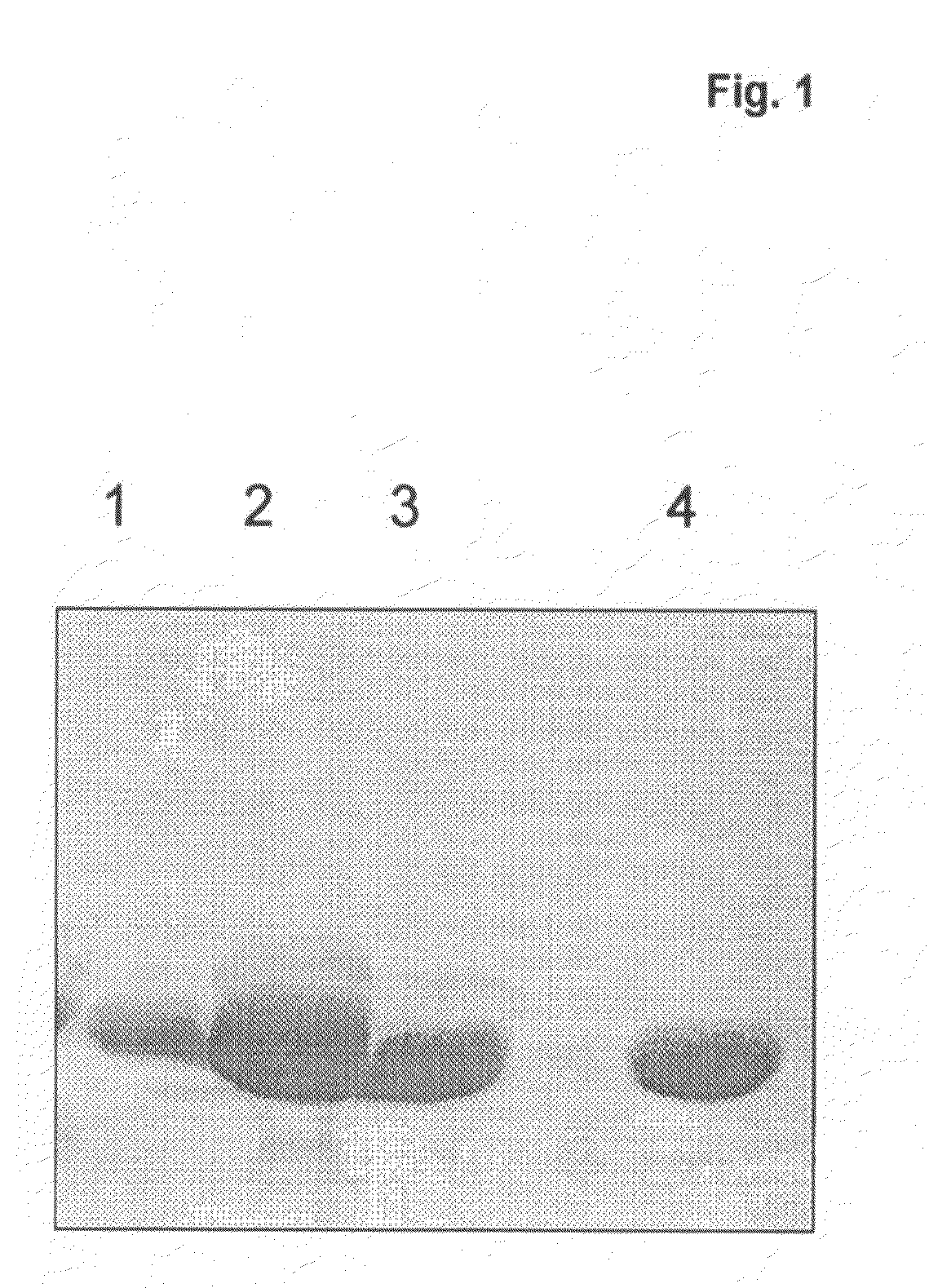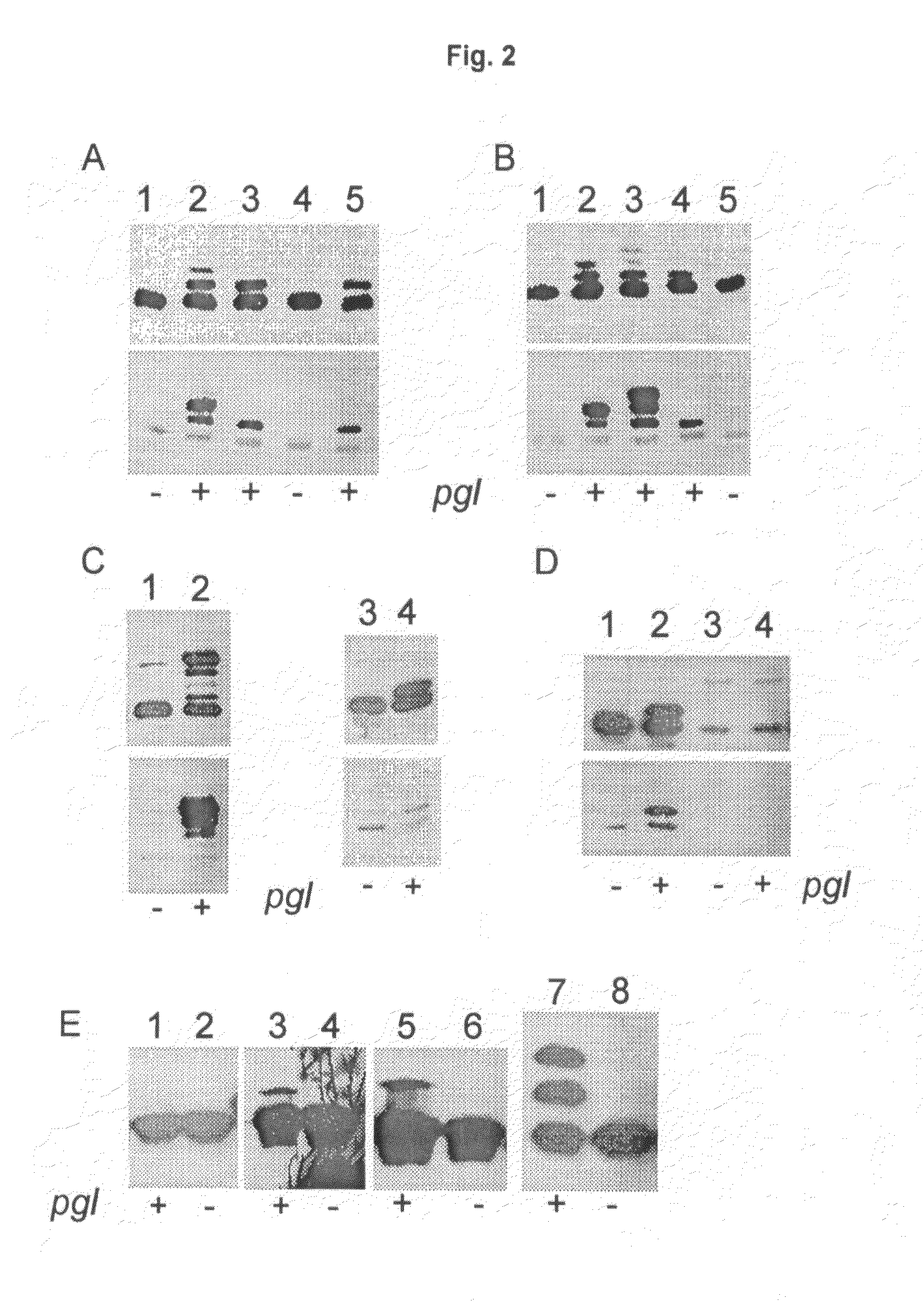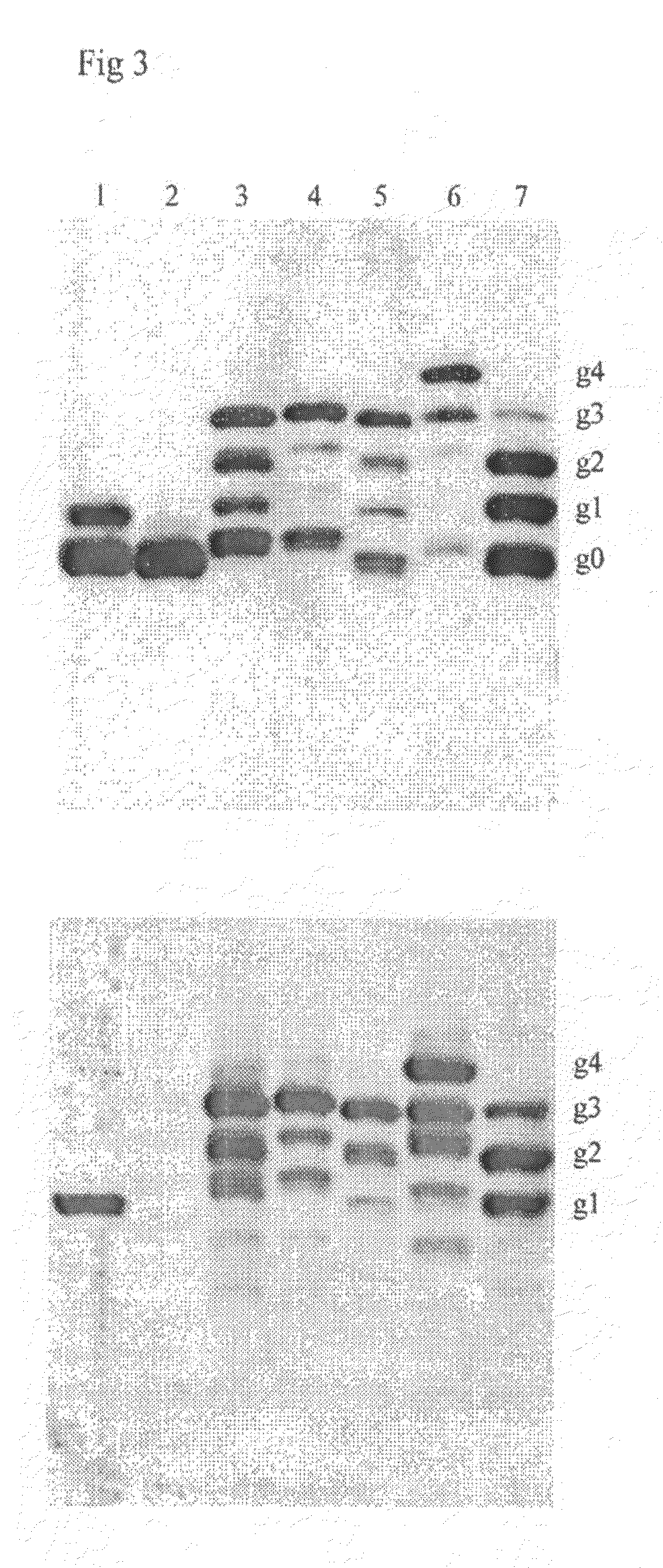Recombinant n-glycosylated proteins from procaryotic cells
a procaryotic cell and nglycosylation technology, applied in the direction of peptides, drug compositions, transferases, etc., can solve the problems of insufficient n-glycosylation of bacterial n-linked protein glycosylation, inefficient n-glycosylation of some target proteins,
- Summary
- Abstract
- Description
- Claims
- Application Information
AI Technical Summary
Benefits of technology
Problems solved by technology
Method used
Image
Examples
example 1
Elucidation of the Primary Peptide Sequence that Timers Glycosylation
[0079]It is known that lipoyl domains similar to MexA of P. aeruginosa and accordingly also in AcrA of C. jejuni form a compact protein that can be individually expressed in E. coli (reviewed by Berg, A, and de Kok, A. (1997). 2-Oxo acid dehydrogenase multienzyme complexes. The central role of the lipoyl domain. Biol. Chem. 378, 617-634). To check which acceptor peptide sequence was required for N-glycosylation by the pgl machinery in E. coli the lipoyl domain of AcrA was taken. It was used as a molecular scaffold to transport peptides of different lengths to the periplasm and present them to the pgl machinery in vivo.
[0080]Therefore, a plasmid coding for the lipoyl domain (Lip) was constructed and N-terminally fused to the signal sequence of OmpA (Choi, J. H., and Lee, S. Y. (2004). Secretory and extracellular production of recombinant proteins using Escherichia coli. Appl Microbiol Biotechnol 64, 625-635) and C-t...
example 2
Verification of Example 1; AcrA-D121A is not Glycosylated at N123
[0088]To confirm the findings from the peptide display approach an aspartate to alanine mutation was inserted at position 121 (D121A, i.e. 2 residues before the glycosylated N123) in the full length soluble version of the AcrA protein and it was tested whether the site N123 could still be glycosylated in E. coli. In order to test this AcrA-D121A was expressed and its glycosylation status was analyzed. For the analysis an engineered AcrA was used. It differed from the original C. jejuni gene in that it contains the PelB signal sequence (Choi and Lee, 2004, supra) for secretion into the periplasm and a C-terminal hexa histag for purification. It has been shown that this AcrA variant gets secreted, signal peptide-cleaved and glycosylated as the lipid anchored, native protein (Nita-Lazar et al., 2005, supra). The following is the protein sequence of the soluble AcrA protein:
(sequence 4)MKYLLPTAAAGLLLLAAQPAMAMHMSKEEAPKIQMPP...
example 3
Introducing Artificial Glycosylation Sites into AcrA
[0092]To test if the introduction of an aspartate residue could generate a glycosylation site, AcrA mutants were generated in which the residue in the −2 position of the not used glycosylation sites in positions N117 and N147 of soluble AcrA were exchanged for aspartate (F115D, T145D). It was then tested whether the modified glycosylation sites could be glycosylated by the same assay as described in example 2. Both mutations were individually inserted either into the wildtype sequence of the soluble version of AcrA or in the double mutant in which both used glycosylation sites were deleted (N123Q and N273Q). Periplasmic extracts of cultures induced for 4 hrs were prepared, separated by SDS page and analyzed by Western blotting (FIG. 2B). As controls the samples of wildtype glycosylated and non glycosylated AcrA were run on the same gel (lanes 1 and 2). The T145D mutation affected the −2 position of the natively not used glycosylati...
PUM
| Property | Measurement | Unit |
|---|---|---|
| OD | aaaaa | aaaaa |
| pH | aaaaa | aaaaa |
| pH | aaaaa | aaaaa |
Abstract
Description
Claims
Application Information
 Login to View More
Login to View More - R&D
- Intellectual Property
- Life Sciences
- Materials
- Tech Scout
- Unparalleled Data Quality
- Higher Quality Content
- 60% Fewer Hallucinations
Browse by: Latest US Patents, China's latest patents, Technical Efficacy Thesaurus, Application Domain, Technology Topic, Popular Technical Reports.
© 2025 PatSnap. All rights reserved.Legal|Privacy policy|Modern Slavery Act Transparency Statement|Sitemap|About US| Contact US: help@patsnap.com



